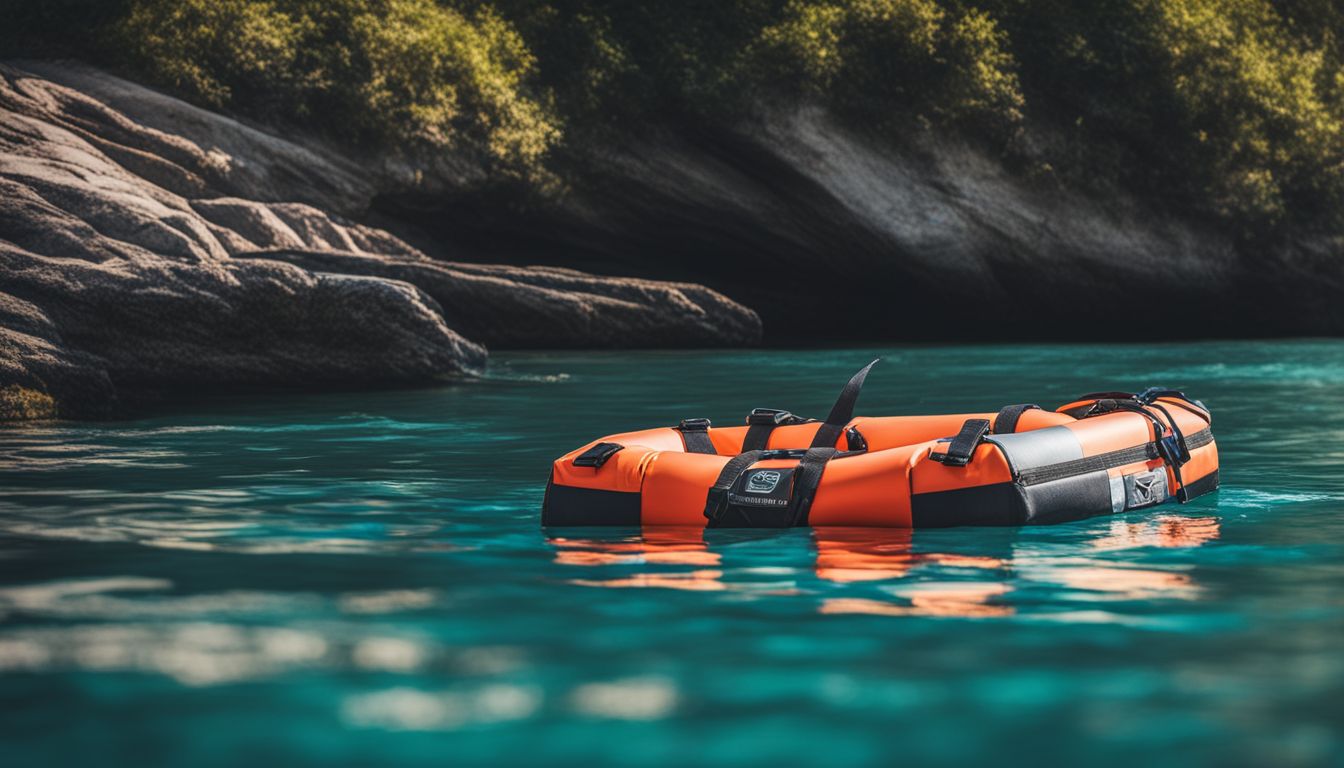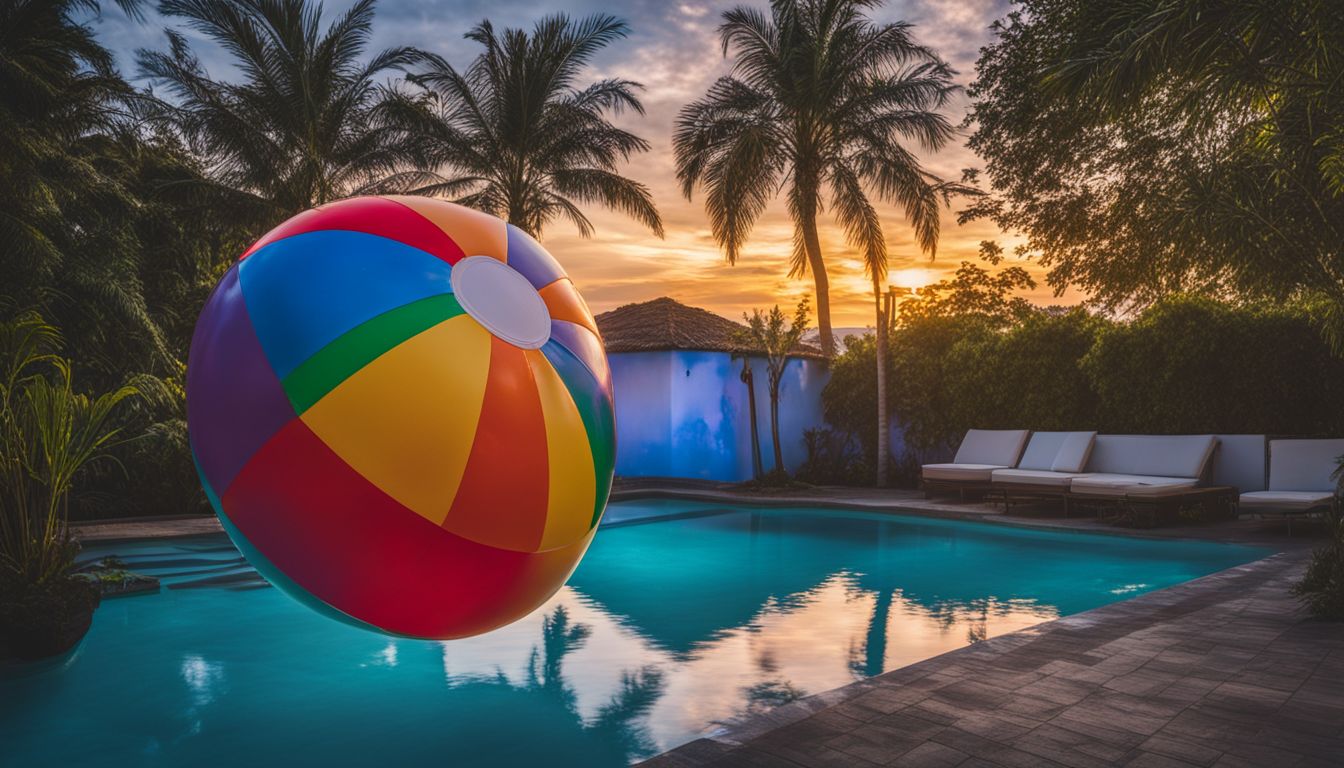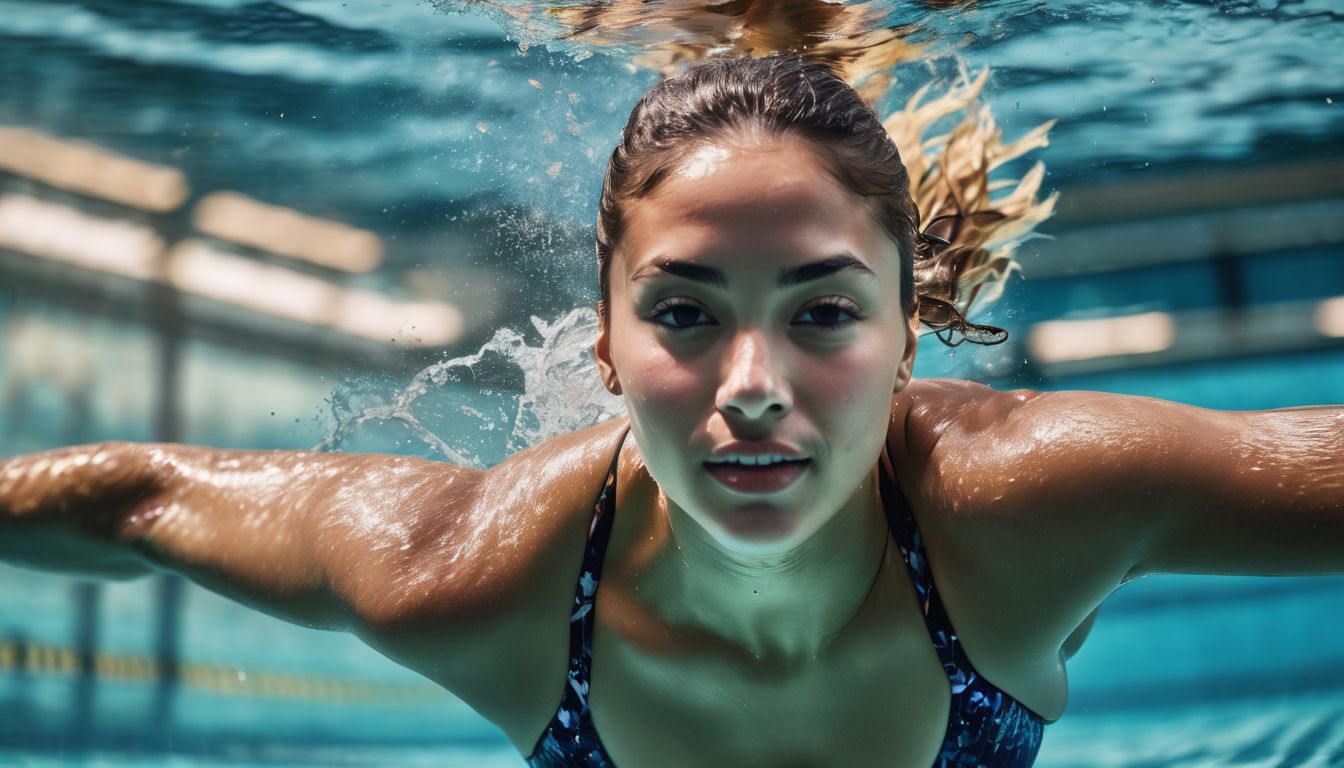How to float on water?
Struggling to stay afloat in water can be pretty scary. Did you know, regardless of body shape or size, everyone has the potential to float? In this guide, we will demystify the art of floating on water with easy-to-understand steps.
Trust us; mastering this crucial skill will make your time in water much more enjoyable and safe.
Key Takeaways
- Floating on water is a skill that everyone can learn, regardless of body shape or size.
- Knowing how to float is important for water safety and can help prevent drowning.
- The science behind floating involves understanding buoyancy, body composition, and the role of water density.
- To float on water, assume a horizontal position with arms and legs spread out wide, take deep breaths, relax your muscles, and distribute your weight evenly.
Why Learn How to Float is Essential
Being able to float on water is a key skill for anyone. It helps us feel calm and safe in the water. It also builds our trust in the water, which is very important. Not only that, but it lays down the first block of learning how to swim.
You need to know how to float before you can move your arms and legs wide or use swimming strokes like freestyle. The science behind floating involves our body composition and buoyancy – the push given by water that fights gravity’s pull downwards.
People with more air in their lungs tend to float easily as they are less dense than water. No matter your body fat percentage or muscle mass, everyone can learn this life-saving trick.
What This Guide Covers your ability to float
This guide aims to teach you how to float in water. It sheds light on the science behind floating, such as understanding buoyancy and the role of water density. Your body make-up also links to your ability to float, and we explain that too.
We share a step-by-step approach for preparing before entering the water and finding the right technique for floating. You will find out about common errors like bad body posture, wrong breathing ways, and not being able to relax or have self-belief when in water.
All these tips can help you master this important skill in swimming.
Why Float in water is a Crucial Skill

Floating is more than just play in the pool. It’s a key skill that saves lives. If you fall into deep water, knowing how to float can help keep your face out of the water. With your airways clear, you’ll have time to call for help or swim back to safety.
Floating is not only a life-saver but also opens doors to learning new swimming strokes and having fun in the water.
The body balance learned while floating helps when you learn how to swim. You find out how to move without sinking and get comfy with the feel of water around you. This makes it easier for beginners who are afraid of sinking because they know they can stay on top of the water if they stay calm and float correctly.
Learning this skill may be tough for some kids at first but once mastered, it makes them safer near deep waters by giving an important self-rescue tool: staying on top until help comes along! So start floating today – whether in a saltwater sea or your local swimming pool!
Importance in Water Safety
Knowing how to float on water keeps you safe. It can cut down the risk of drowning by a lot. This fact is true for everyone, even for a strong swimmer in open bodies of water. Remember, all sources of water pose danger no matter its size or depth.
So, knowing how to stay on top of the water can save your life in case you fall in without a personal floatation device. For autistic individuals too, learning this skill adds an extra layer of safety around water.
Health Benefits of Floating
Floating helps your body and mind. It can ease worry and make muscles loose. People float in a tank full of Epsom salt and water. This process fights stress, gloom, pain, and fear.
Being in this tank relaxes your muscles and makes blood flow better. If you get scared easily or have panic attacks, float therapy is good for you too!
Floating as a Gateway Skill in Swimming
Floating is the first step you need to take to learn how to swim. It gives beginners a feel for the water. This helps them get used to being in a pool or in the sea. People find floating easy once they relax and breath right.
From there, adding small movements can turn into swimming strokes like freestyle or butterfly. So, mastering floating can lead you down a path of learning other techniques, skills and tips that every good swimmer needs.
The better your ability to float on water, the more at ease you will be when it’s time to start moving your arms and legs wide for different strokes. Also, if ever you are tired while swimming, just flip onto your back and float! It saves energy and lets you stay safe in deep waters too!
The Science Behind Floating and Sink

Floating on water is all about buoyancy. Objects can either sink or float based on their density. Body fat helps you float because it’s less dense than water, while muscles and bones are denser and make you sink a bit.
The same rule works for other things too, like boats! The big pocket of air in a ship makes it less dense than the water around it.
The role of upthrust force also matters here. Upthrust is the support force from the water that pushes us to the top of the surface. When your body’s weight force gets balanced by this push, you start floating! Did you know saltwater has more upthrust? It’s denser than freshwater which makes people find they can float higher with ease in saltwater.
https://www.youtube.com/watch
Understanding Buoyancy
Buoyancy is how objects float in water. It’s the upward force that pushes things up when they’re submerged. This force comes from the volume of water an object displaces. The more water it pushes aside, the stronger the buoyant force is.
Archimedes’ Principle explains this concept and tells us that the buoyant force is equal to the weight of the water displaced by an object. So, if something weighs less than the amount of water it displaces, it will float!
The Role of Water Density
Water density plays a crucial role in determining whether an object will float or sink in water. Objects that are less dense than water will float, while those that are more dense will sink.
The density of water is relatively low at 1 gram per centimeter cubed. It is important to note that the density of water can change with temperature. As the temperature drops below freezing point, the density of water decreases.
So, understanding and considering the density of water is essential when learning how to float on it.
Human Body Composition and Floating
The human body is made up of around 60% water, and this plays a significant role in our ability to float. Our body composition, including the amount of muscle and fat we have, affects our buoyancy in the water.
The human body is roughly two-thirds less dense than water, which helps us float on the surface. People with higher amounts of body fat may find it easier to float due to its lower density compared to muscle tissue.
So, if you’re looking to improve your floating skills, understanding your body composition can make a difference in how well you stay afloat in the water.
Step-by-Step Guide to Learning How to Swim and Floating and Breath
- Get ready by finding a calm and shallow area in the water.
- Take a deep breath and relax your body.
- Lie on your back in the water, keeping your head and face above the surface.
- Spread out your arms and legs wide, like a starfish.
- Slowly kick your legs and move your arms in small movements to help you stay afloat.
- Keep your belly button pointing up towards the sky to maintain a good floating position.
- Remember to breathe deeply and exhale slowly to stay relaxed.
- If you start sinking, take another deep breath and try to distribute your weight evenly.
- To float on your front, push off the bottom of the pool or push gently away from the pool wall.
- Practice floating regularly to improve your skills and feel more confident in the water.
- Remember that everyone can learn how to float with practice and patience.
Preparation Before Entering the Water
Before you enter the water, it is important to take some necessary precautions. First, make sure you know how to swim or have someone with you who does. Water safety is crucial, so never swim alone and always have someone nearby who can go for help if needed.
Remember to follow the rules and safe behaviors when entering the water, such as entering feet first and avoiding diving in shallow areas. It’s also essential to check for depth and obstructions before getting in the water and be cautious when riding waves.
By ensuring these preparations are taken care of, you can enjoy your time in the water safely.
The Right Technique for Floating
To float properly in water, there are a few key techniques you should keep in mind. First, position your body on your back with your arms and legs spread out wide. Take a deep breath and fill your lungs with air to help you stay buoyant.
Then, relax your muscles and let go of any tension in your body. Keep looking straight up at the sky or ceiling to maintain balance and prevent sinking. Remember to distribute your weight evenly across the surface of the water by keeping your belly button up towards the sky.
By following these steps and practicing regularly, you can master the right technique for floating and feel comfortable in the water.
Practice Makes Perfect
Regular practice is key to improving your floating skills. The more you practice, the better you will become at floating on water. By dedicating time to practicing floating techniques, you can develop greater control over your body’s buoyancy and improve your ability to stay afloat.
Just like any other skill, the more you practice, the more confident and comfortable you will feel in the water. Practice also strengthens your swimming muscles and helps build endurance, which contributes to better overall swimming performance.
So don’t be discouraged if it takes some time to master floating – keep practicing and you’ll see progress!
Common Mistakes and How to Avoid Them
- Incorrect body posture: Keep your body relaxed and in a horizontal position, with your belly button facing up towards the sky.
- Breathing mistakes: Take deep breaths from your diaphragm and exhale slowly, avoiding shallow breathing or holding your breath.
- Lack of relaxation and confidence: Practice staying calm and focused in the water, using techniques like positive self-talk and visualization.
- Trying to float by making big movements: Instead, focus on small, controlled movements to find balance and maintain buoyancy.
- Looking straight down or tilting your head back: Keep your head aligned with your body, looking straight ahead or slightly down towards the water’s surface.
- Incorrect distribution of weight: Ensure that your weight is evenly distributed throughout your body, avoiding putting too much weight on any one area.
- Not taking enough deep breaths before attempting to float: Take a few deep breaths to fill your lungs with air, which will increase buoyancy and make floating easier.
Remember these swimming tips to improve your floating skills and feel more comfortable in the water. With practice and patience, anyone can learn how to float successfully!
Incorrect Body Posture
Slouching and rolling the shoulders forward can cause your buttocks to sink in the water. This incorrect body posture lowers your center of gravity, making it harder to float on the surface.
To improve your floating ability, it’s important to maintain proper body posture in the water. You can work on strengthening weak muscles through exercises that engage different muscle groups.
Swimming lessons are also helpful for correcting posture defects and building overall strength. By focusing on maintaining correct body alignment and engaging the right muscles, you’ll find it easier to stay afloat while enjoying the water.
Breathing Mistakes
Breathing is crucial when learning to float on water. One common mistake is breathing too often, which can lead to hyperventilation. It’s important to establish a rhythm and avoid taking too many breaths while swimming.
Another mistake is breathing in with your nose instead of your mouth while floating on your back. While this isn’t fatal, it’s recommended to get used to breathing with your mouth for swimming.
Proper breathing technique plays a significant role in improving speed, stroke technique, and body positioning in the water. Remember to maintain a steady stream of bubbles and find a comfortable rhythm for efficient and effective breathing while floating or swimming.
Lack of Relaxation and Confidence
Many people struggle to float on water because they lack relaxation and confidence. When you are tense and anxious, it is difficult for your body to stay buoyant in the water. Additionally, fear of water can make it even more challenging to relax and float.
However, with practice and basic exercises, you can gradually overcome this fear and build your confidence in the water. Remember that floating is a natural ability that everyone can learn.
By taking deep breaths, finding a comfortable position, and focusing on staying relaxed, you will be able to float easily on the surface of the water. So take a deep breath and trust yourself – you’ve got this!
Conclusion
In conclusion, learning to float on water is an essential skill for beginners in swimming. By understanding the science behind floating and practicing the right technique, you can become more confident and comfortable in the water.
Remember to stretch out your arms and legs, distribute your weight, and take deep breaths. With practice, anyone can learn to float and enjoy the benefits of this buoyant activity.
So dive in, relax, and let the water support you as you master the art of floating!
Key Takeaways
Floating on water is an essential skill that everyone should learn. It not only helps with water safety but also has various health benefits. Understanding buoyancy and the science behind floating can help improve your technique.
To float on water, it’s important to maintain the right body posture and practice relaxation and confidence in the water. Common mistakes to avoid include incorrect body posture and breathing techniques.
Remember, floating is a skill that can be mastered with practice, so don’t get discouraged if you find it difficult at first. By following these tips and understanding the science behind it, anyone can become a proficient floater in no time!
Next Steps for Your Floating Journey
Now that you have learned the basics of floating, it’s time to take your floating journey to the next level. First, continue practicing your technique in different bodies of water like lakes or rivers, so you can become comfortable with floating in various conditions.
Additionally, consider enrolling in swimming lessons to enhance your overall water skills and gain more confidence in the water. Remember, regular practice is key to improving your floating ability and becoming a stronger swimmer.
Keep exploring different swimming strokes and techniques while always prioritizing safety. With dedication and perseverance, you’ll be able to float effortlessly and enjoy all the benefits that come with it.
Frequently Ask Questions
What is the first step in learning how to float?
The first step is to develop comfort with the water. It is important to relax in the swimming pool and learn to trust the water's buoyancy. You can start by getting your face into the water while standing in shallow water, gradually working your way to deeper water as your comfort level improves.
Why is maintaining breath control important for the ability to float?
Taking a deep breath helps to increase your buoyancy as air is less dense than water. Picture your lungs as balloons; when filled with air, they help you float higher. Remember to keep your rib cage expanded. Exhaling will cause you to sink a little, so it's a bit of a balancing act.
Is there a difference in floating in salt water and regular swimming pool water?
Yes, salt water naturally helps you float because it has a higher density compared to regular pool water. However, the principles of floating don't change. You still need to keep a deep breath and keep your back into the water while staying relaxed.
What are some tips to help me learn how to float?
Some tips include staying calm, breathing slowly and deeply, and spreading out your body surface to increase buoyancy. It's also helpful to bend your knees and move your legs a bit to avoid sinking. Align your spine in a straight line and let your lower body float toward the surface.
Is being able to float necessary for people who want to swim?
Yes, the ability to float is a fundamental skill in swimming. Floating not only builds your comfort in the water, but it's also an efficient way for you to rest and catch your breath without having to touch the ground or swim to a wall. It is a basic skill everyone should have before trying to swim.
Why do some people float easier than others?
People with a higher body fat percentage tend to float more easily than those with lower body fat and higher muscle mass since fat is less dense than muscle. However, everyone can learn to float with practice, as it's largely about balance and relaxation.
What is step 3 when learning how to float on your back?
Step 3 would typically involve getting your face and ears into the water. As you lean back, keep taking a deep breath to lift your rib cage, keep your belly button up to the sky and keep your body in a straight line. You should let your back come up to meet the water's surface rather than trying to push it up.
Why do I tend to sink when I breathe out?
When you breathe out, you are replacing the air in your lungs with water, which makes you less buoyant and causes you to sink a little. This is normal and something that all swimmers adjust to with practice.
How can advanced swimmers improve their ability to float?
Advanced swimmers can use their breath control more effectively, using the principles of buoyancy and displacement. They can find the balance between inhaling to stay afloat and exhaling slightly to glide or swim forward. Also, they can experiment with different body positions to see which ones allow them to float most effectively.
Can you give some exercise tips to practice floating?
One of the exercises to practice floating is to stand in shallow water, lean back slowly into the water while taking a deep breath, keep your body flat and stretched out like a starfish with your hands above your head. Try to keep still, keep your face in the water and just relax, let your self float. The more you practice the better you get at it and be able to extend your time floating.









